robutacion
Member
Hi peoples,
I have mention on some other thread another day, the pen blanks hardening that I have been playing around these last few days and decided to make a thread by its own as there is a bit of information involved. OK so I bough 1 litre of wood hardener for $69 and started preparing some blanks that I had cut a few months ago while they were totally saturated in water from being exposed to rains for months.
The wood was already spalted and braking apart from the logs so I took one piece home (3 available) and sliced it all in 1" strips, thinking that the wood would shrink while drying but, that never happen as the timber is bone dry, light as a feather. With the wood so soft (extremely soft) it will soak like a sponge so I re-cut them at 21mm square and them, using my home made jig, I cut the 4 x square corner to minimize the volume of wood to stabilize and then to protect the blank from blowing apart when dry and put in the lathe.
The truth is, 95% of blanks that are destroyed before they even reach a close pen shape, are due to the cutting of the blank corners on the lathe. This apply to soft woods, spalted woods stabilized or not, cross and diagonal cut woods, brittle woods, burls, and many others. With this said , there a lot of timbers species that I don't have any hesitation in start turning with a square blank but those woods that we normal call "fragile" for whatever the reason, shouldn't the attempted to be put in the lathe with the intent to round it and some times take it closer to the shape and size require using a gouge of some sort.
This simple, inexpensive, easy to make jig can be used on the bandsaw or on the tablesaw, without any difficulty. The dangerous process of trying to remove the blank corners on any of these tools manually, as put lots of pen turners off, and for good reasons! This jig that I will shown in detail on a thread dedicated to it soon, should be used on any blanks, soft, hard, segmented, acrylic, worthless wood blanks (specially), and any others, as this would have a high percentage rate of success in saving the blanks, with also the benefit of saving a lot of your tools, particularly sharpening!
Coming back to my lot of spalted blanks, they are from the Golden Wattle species which already has crazy colours and busy stuff within, the spalting on this lot is just out of this world indeed. There is no "natural" alive wood of any kind, acrylic or stone that will get even close to this, so I will do what it takes to stop the rotting process at this precise point and stabilize it to preserve all its present characteristics.
Some of these blanks are that fragile that some will brake in half just by holding the longer pieces, by one end only. yeah...!
yeah...!
The result for the 1 litre bottle I purchase on Monday, was the 18 blanks that I finish at lunch time yesterday, and another 12 that I use on the solution that was left from the first 18. The hardener didn't cover the 2 layers of 6 blanks each I had in a 2kg ice cream container, only covered half way to the top layer so this morning I remove the bottom 6 blanks out and turn up side down the ones I had on the top, which they soaked every single drop left in the container in less than 3 hours! They are all now on the drying rack.
I did turn 2 blanks from the first lot of 18, by using the heat gun to dry then quickly. I had then ready to take pics yesterday but today I decided to try giving them and to some other samples, a super coat of this Liquid Glass I received recently, as a test. This was only done a couple of hours ago, I doubt that they will be dry enough for some pics, I'm going to stop here and go and have a look, armed with my camera, will see!
OK, I'm back from the shed (about 20 minutes later) and is too bloody hot outside and is 11:15 at night, with a day of 39C...!
Anyway, the Liquid Glass is hard enough for some "gentle touch" pics so I got some pics of the stabilized blank (a darker one) and the other was made of the strips I was getting from cutting the blanks from 1" to 21mm. I simply soaked 5 of the strips into PVA glue and then I clamp them with some news paper and more clamps.
This blank was done as a test to see if the white glue would harden the wood as good as the wood hardener but, it was hard enough to turn but not with any gouge but with the overlaid 4" sanding discs on the grinder. Was no hope in hell to get this blank cut and shaped with any cutting tools, it would simply brake "chunks" out of it, destroying the blank totally. These grinding discs are capable of removing and shaping the softest and most fragile material you can thing of, leaving just the final hand sanding and the finish to do manually, 99.99% effective, safe and faster.
Tomorrow or so I will turn a couple more samples, getting a snow white one with a crossing dark line and a medium coloured one.
And now, the pics:
Cheers
George
I have mention on some other thread another day, the pen blanks hardening that I have been playing around these last few days and decided to make a thread by its own as there is a bit of information involved. OK so I bough 1 litre of wood hardener for $69 and started preparing some blanks that I had cut a few months ago while they were totally saturated in water from being exposed to rains for months.
The wood was already spalted and braking apart from the logs so I took one piece home (3 available) and sliced it all in 1" strips, thinking that the wood would shrink while drying but, that never happen as the timber is bone dry, light as a feather. With the wood so soft (extremely soft) it will soak like a sponge so I re-cut them at 21mm square and them, using my home made jig, I cut the 4 x square corner to minimize the volume of wood to stabilize and then to protect the blank from blowing apart when dry and put in the lathe.
The truth is, 95% of blanks that are destroyed before they even reach a close pen shape, are due to the cutting of the blank corners on the lathe. This apply to soft woods, spalted woods stabilized or not, cross and diagonal cut woods, brittle woods, burls, and many others. With this said , there a lot of timbers species that I don't have any hesitation in start turning with a square blank but those woods that we normal call "fragile" for whatever the reason, shouldn't the attempted to be put in the lathe with the intent to round it and some times take it closer to the shape and size require using a gouge of some sort.
This simple, inexpensive, easy to make jig can be used on the bandsaw or on the tablesaw, without any difficulty. The dangerous process of trying to remove the blank corners on any of these tools manually, as put lots of pen turners off, and for good reasons! This jig that I will shown in detail on a thread dedicated to it soon, should be used on any blanks, soft, hard, segmented, acrylic, worthless wood blanks (specially), and any others, as this would have a high percentage rate of success in saving the blanks, with also the benefit of saving a lot of your tools, particularly sharpening!
Coming back to my lot of spalted blanks, they are from the Golden Wattle species which already has crazy colours and busy stuff within, the spalting on this lot is just out of this world indeed. There is no "natural" alive wood of any kind, acrylic or stone that will get even close to this, so I will do what it takes to stop the rotting process at this precise point and stabilize it to preserve all its present characteristics.
Some of these blanks are that fragile that some will brake in half just by holding the longer pieces, by one end only.
The result for the 1 litre bottle I purchase on Monday, was the 18 blanks that I finish at lunch time yesterday, and another 12 that I use on the solution that was left from the first 18. The hardener didn't cover the 2 layers of 6 blanks each I had in a 2kg ice cream container, only covered half way to the top layer so this morning I remove the bottom 6 blanks out and turn up side down the ones I had on the top, which they soaked every single drop left in the container in less than 3 hours! They are all now on the drying rack.
I did turn 2 blanks from the first lot of 18, by using the heat gun to dry then quickly. I had then ready to take pics yesterday but today I decided to try giving them and to some other samples, a super coat of this Liquid Glass I received recently, as a test. This was only done a couple of hours ago, I doubt that they will be dry enough for some pics, I'm going to stop here and go and have a look, armed with my camera, will see!
OK, I'm back from the shed (about 20 minutes later) and is too bloody hot outside and is 11:15 at night, with a day of 39C...!
Anyway, the Liquid Glass is hard enough for some "gentle touch" pics so I got some pics of the stabilized blank (a darker one) and the other was made of the strips I was getting from cutting the blanks from 1" to 21mm. I simply soaked 5 of the strips into PVA glue and then I clamp them with some news paper and more clamps.
This blank was done as a test to see if the white glue would harden the wood as good as the wood hardener but, it was hard enough to turn but not with any gouge but with the overlaid 4" sanding discs on the grinder. Was no hope in hell to get this blank cut and shaped with any cutting tools, it would simply brake "chunks" out of it, destroying the blank totally. These grinding discs are capable of removing and shaping the softest and most fragile material you can thing of, leaving just the final hand sanding and the finish to do manually, 99.99% effective, safe and faster.
Tomorrow or so I will turn a couple more samples, getting a snow white one with a crossing dark line and a medium coloured one.
And now, the pics:
Cheers
George
Attachments
-
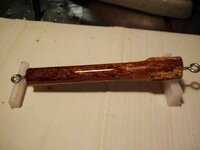 timber preparation 1199_(1).jpg27.8 KB · Views: 169
timber preparation 1199_(1).jpg27.8 KB · Views: 169 -
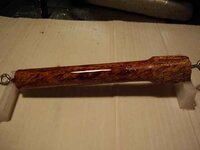 timber preparation 1200_(1).jpg27.3 KB · Views: 128
timber preparation 1200_(1).jpg27.3 KB · Views: 128 -
 timber preparation 1201_(1).jpg30.6 KB · Views: 131
timber preparation 1201_(1).jpg30.6 KB · Views: 131 -
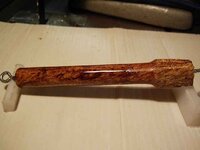 timber preparation 1202_(1).jpg31.6 KB · Views: 124
timber preparation 1202_(1).jpg31.6 KB · Views: 124 -
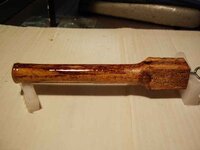 timber preparation 1203_(1).jpg30.5 KB · Views: 128
timber preparation 1203_(1).jpg30.5 KB · Views: 128 -
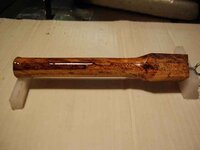 timber preparation 1205_(1).jpg28.7 KB · Views: 133
timber preparation 1205_(1).jpg28.7 KB · Views: 133 -
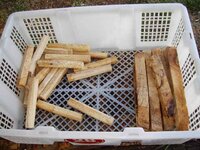 timber preparation 1189_(1).jpg72.1 KB · Views: 161
timber preparation 1189_(1).jpg72.1 KB · Views: 161 -
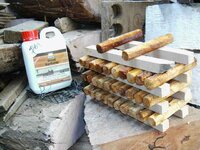 timber preparation 1190_(1).jpg68.1 KB · Views: 205
timber preparation 1190_(1).jpg68.1 KB · Views: 205 -
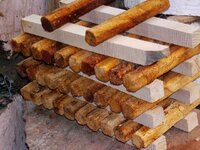 timber preparation 1191_(1).jpg64.4 KB · Views: 156
timber preparation 1191_(1).jpg64.4 KB · Views: 156 -
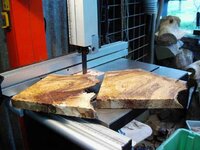 timber preparation 285_(1).jpg59.5 KB · Views: 171
timber preparation 285_(1).jpg59.5 KB · Views: 171
